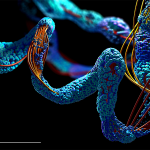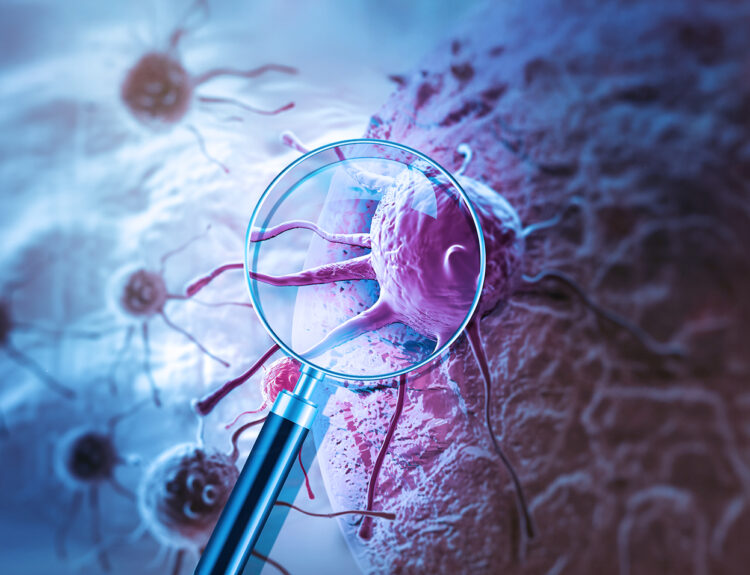According to a new study published in the open-access journal PLOS Biology, an anti-tumor drug promotes weight loss in mice at low doses by activating a natural hunger-suppressing pathway. The findings point to a promising new path for the development of anti-obesity Camptothecin treatments.
Anti-tumor drugs
Any drug that is effective in the treatment of malignant, or cancerous, disease is referred to as an anticancer drug, also known as an antineoplastic drug. When a new cell is formed, it goes through a typical process to become a fully functional (or mature) cell. The cell cycle is a series of phases that occur during this process. Antitumor drugs attack cells at various stages of the cell cycle.
Camptothecin (CPT) is a topoisomerase inhibitor. M. E. Wall and M. C. Wani discovered it in 1966 while conducting systematic screening of natural products for anticancer drugs. Camptothecin is an antineoplastic alkaloid isolated from the Chinese tree Camptotheca acuminata. Camptothecin selectively stabilizes topoisomerase I-DNA covalent complexes during the S phase of the cell cycle, thus religation of topoisomerase I-mediated single-strand DNA breaks gets inhibited and potentially lethal double-strand DNA breaks are produced, when the DNA replication machinery comes across it.
Camptothecin (CPT) reduces obesity in mice
According to a new study, camptothecin (CPT) promotes weight loss in mice at low doses by activating a natural hunger-suppressing pathway. Obesity is a global health issue that puts people at risk for diseases like type 2 diabetes, cardiovascular disease, fatty liver, and even cancer. As a result, it poses a significant threat to human health and places a significant burden on public health systems.
GDF15 has emerged as a new anti-obesity target. It is a stress-responsive cytokine that is expressed in several tissues and secreted into the bloodstream in response to various stimuli as part of a variety of disease processes. In mice and nonhuman primates, increasing GDF15 levels via transgenic overexpression or pharmacological administration result in a significant decrease in body weight.
Increased circulating levels of growth differentiation factor 15 (GDF15) have been shown in rodents and nonhuman primates to reduce food intake and body weight via activation of the hindbrain receptor glial-derived neurotrophic factor (GDNF) receptor alpha-like (GFRAL), suggesting that endogenous induction of this peptide holds promise for obesity treatment. Camptothecin is a GDF15 inducer. Through activation of the integrated stress response, oral CPT treatment raises circulating GDF15 levels in diet-induced obese (DIO) mice and genetic ob/ob mice, with enhanced Gdf15 expression largely in the liver.
Researchers at Northwest A&F University in Shaanxi, China, used the “Connectivity Map,” a database of gene expression profiles of human cells in response to drug exposure, to look for drugs that could increase GDF15 production. They discovered that cells exposed to the drug camptothecin increased the expression of GDF15. A series of animal experiments were carried out to investigate the possible relationship between CPT and changes in circulating GDF15 levels, food intake, and body weight.
In diet-induced obesity (DIO) mice and genetic ob/ob mice, oral CPT treatment raises circulating GDF15 levels. Both DIO and genetic ob/ob mice were orally administered with an acute single dose of either vehicle or CPT (1 mg kg-1 of body weight) to investigate the effect of CPT on GDF15 induction in vivo.
In DIO mice and ob/ob mice, 1 mg kg-1 CPT treatment resulted in a 2.2- and 2.0-fold increase in circulating GDF15 levels after 1 h, respectively. CPT promotes circulating GDF15 production in obese mice, according to the findings.
Oral treatment of camptothecin to obese mice increased the level of GDF15 in the blood quickly, resulting in a 12% reduction in food intake and an 11% reduction in body weight over 30 days. In lean mice, however, camptothecin had no effect on GDF15 and had no influence on food intake or body weight. In obese mice, CPT causes hepatic production and release of GDF15, which decreases food intake and normalizes body weight, restoring metabolic dysfunctions.
The body weight of DIO mice was lowered by CPT treatment from 43.63 0.54 g to 39.00 0.20 g, a weight loss of 10.58% ± 0.91% relative to their initial weights. The body weight of vehicle-treated control mice grew by 3.39 g 0.53 g, equal to an increase of 8.25% ± 1.32% over their starting weights. In CPT-treated ob/ob mice, body weight loss was also seen. In contrast to obese mice, lean mice showed identical food intake and body weight to their vehicle controls after 30 days of 1 mg kg-1 day-1 CPT treatment. The lack of effect on body weight in CPT-treated lean mice could be due to the non-elevated GDF15 levels.
It is worth mentioning that CPT only works on obese mice. In mice, this obesity-related impact is well-documented. Despite the fact that numerous organs and tissues contribute to the increase in GDF15 in plasma, the findings revealed that the liver is the primary source of circulating GDF15 after CPT treatment. Increased levels of circulating GDF15 have been linked to hepatic GDF15 production as a result of prolonged caloric excess as well as acute nutritional stress, indicating that the liver plays a crucial role in GDF15 production. In recent studies in mice, sustained endurance exercise has been shown to enhance Gdf15 expression in the liver, skeletal muscle, and cardiac muscle.
GDF15 has been linked to life span, atherosclerotic cardiovascular disease, inflammation and immunology, mitochondrial illness, cancer, rheumatoid arthritis, chronic renal failure, and heart failure, in addition to its anti-obesity properties.
CPT reduces obesity by functioning as a GDF15 inducer, implying that CPT could be useful in the treatment of obesity and its related metabolic problems.




